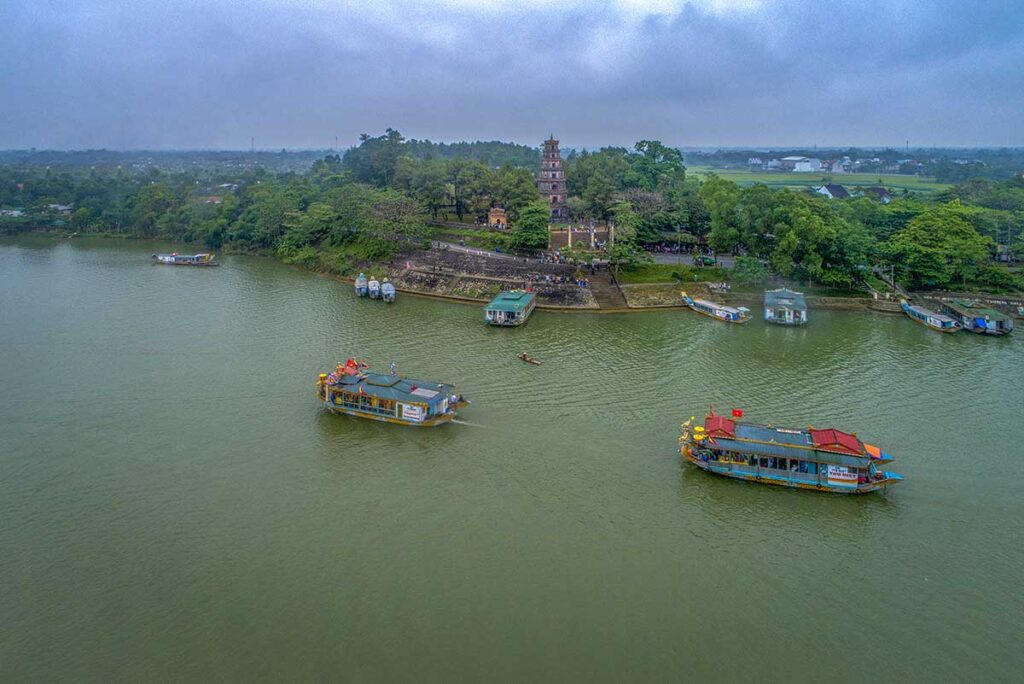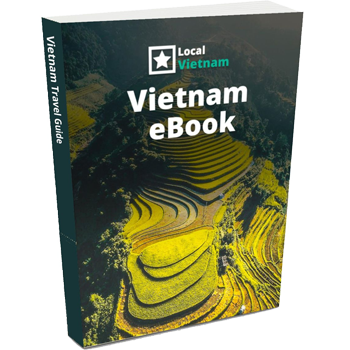What is the Hon Chen Festival?
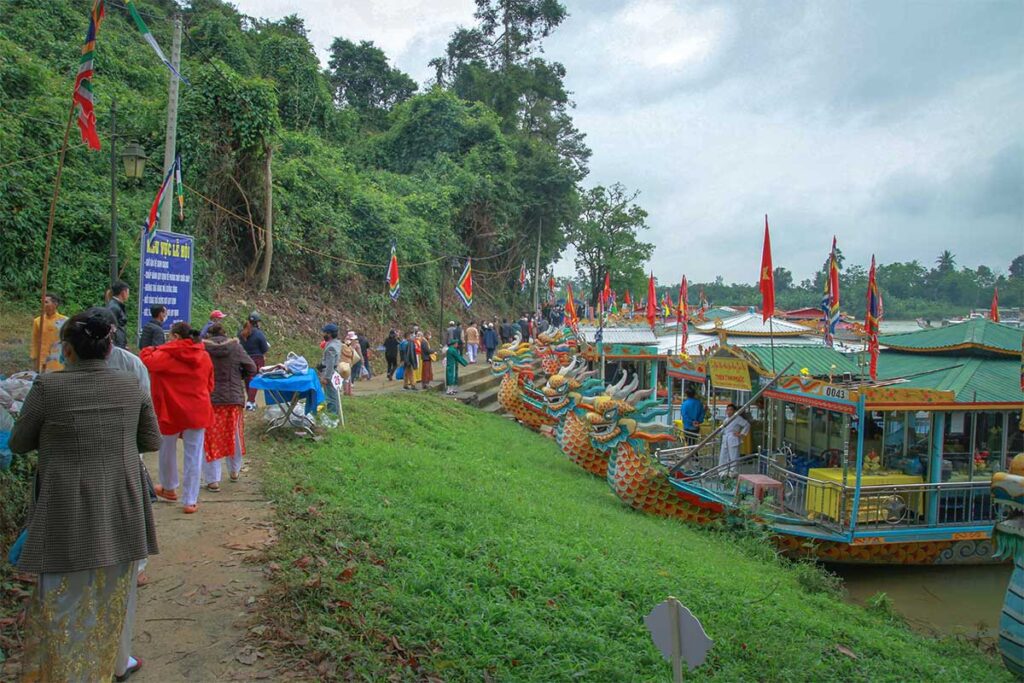
The Hon Chen Festival celebrates the Mother Goddess Thien Y A Na, a central figure in Đạo Mẫu, Vietnam’s traditional belief system centered around nature and feminine spirituality. The event combines folk spirituality, Buddhist elements, and old royal customs, creating a uniquely Hue-style celebration. Also known as the Hue Nam Festival or Via Me (Mother’s Commemoration) Ceremony, it’s not only a religious ritual but also a lively gathering that connects generations through music, belief, and the rhythms of river life.
When and where is it held?
The Hon Chen Festival is held twice a year, during the 3rd and 7th lunar months, which usually fall around late March to early April and late July to early August on the Gregorian calendar. The festival typically lasts two to three days, with the main river procession and temple ceremonies taking place on the second day, often in the evening.
Events are centered around Hon Chen Temple, located on the forested slope of Ngoc Tran Mountain, overlooking the Perfume River in Hue. The river procession often begins from Hai Cat Village, across the water, or occasionally from Chi Lang area in central Hue—especially during larger celebrations—before continuing upstream toward the temple.
What happens during the festival?
The Hon Chen Festival blends ritual, performance, and community spirit over the course of two to three days. From lively river processions to late-night spiritual ceremonies, each part of the event reflects the deep cultural roots of Hue and the worship of Thien Y A Na, the Mother Goddess.
1. Nghinh Than – The river procession
The most iconic part of the festival is the Nghinh Than ritual: a grand river procession that takes place on the second day. Dozens of dragon boats, decorated with colorful flags, lanterns, and flowers, carry sacred palanquins and altars for the gods.
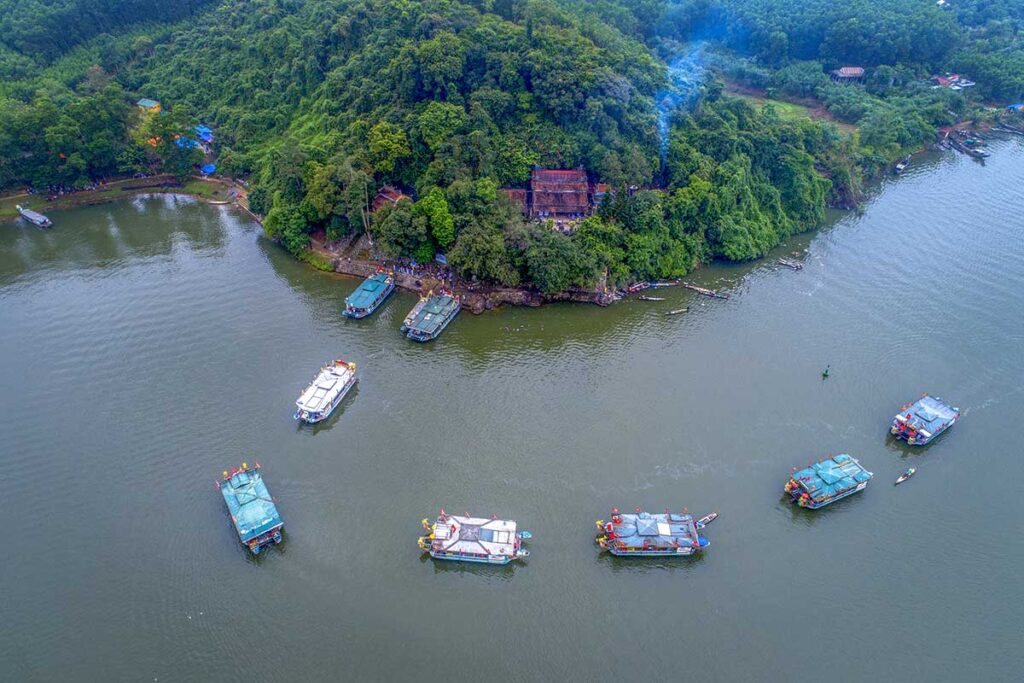
At the heart of the procession is the altar for Thien Y A Na, placed on a specially decorated boat. Other boats carry additional deities, ceremonial tools, musicians, and costumed participants—often dressed in styles inspired by the Nguyen Dynasty. The air fills with the sound of chầu văn music, performed live on board, creating a blend of chanting, drumming, and folk rhythms.
The boats move slowly up and down the Perfume River, turning the entire waterway into a floating ritual space before docking at Hon Chen Temple.
2. Ceremonies at the temple and communal house
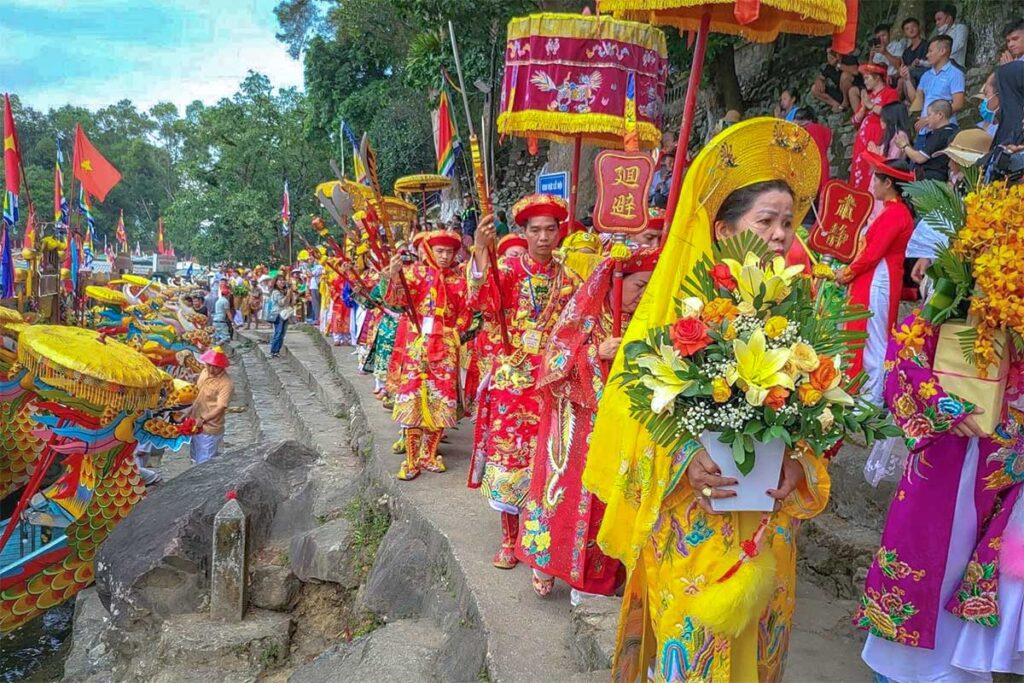
Once the boats arrive, the celebration continues at Minh Kinh Dai, the main sanctuary at Hon Chen Temple. Here, spiritual ceremonies include offerings of incense, flowers, fruit, and symbolic items, as well as chanting, prayers, and trance rituals known as lên đồng.
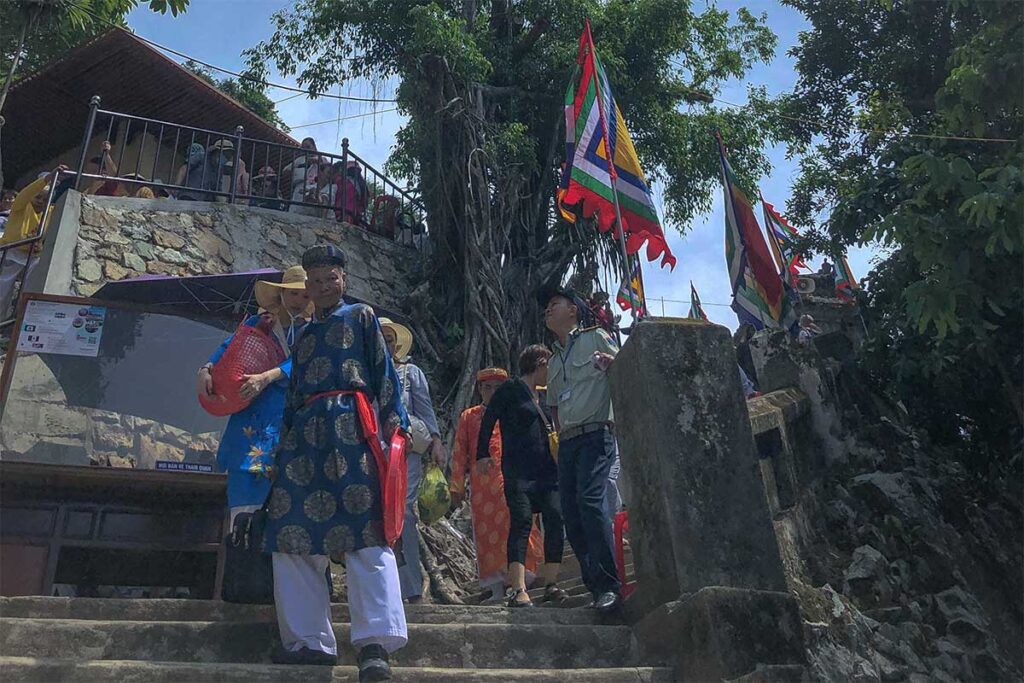
During these rituals, female attendants in ceremonial dress carry betel boxes, tea sets, and gifts, while men carry weapons, parasols, and ritual flags. The energy shifts between solemn prayer and moments of vivid performance, with the atmosphere deepening as night falls. Some ceremonies extend into the night, especially during larger festivals.
3. Chanh Te and final rituals
The following morning, the Chanh Te ceremony takes place—this is the festival’s main offering ritual, often held at the Hai Cat village communal house. Offerings are made to the Mother Goddess and her court, and prayers are given for peace, health, and prosperity.
After this, the Tong Than ritual marks the farewell to the deities, with the symbolic return of the spirits to their realms. As the final gesture, floating lanterns are released onto the river—a peaceful end to a vivid, emotionally charged festival.
Travel tips for joining the Hon Chen Festival
If you want to experience the Hon Chen Festival as a visitor, you don’t need to be religious—just come with curiosity and respect. The best way to take part is by joining a dragon boat from Toa Kham Pier in Hue, or by watching from the riverbanks near Hon Chen Temple. Some local boat operators offer seats during the festival, but they can book out quickly—especially during the main procession—so it’s best to reserve in advance.
To make the most of your visit:
- Arrive early to get a good spot or to board a boat before the main procession begins.
- Morning and late afternoon are the best times to avoid the heat and catch the most atmospheric parts of the festival.
- Dress modestly: cover your shoulders and knees, especially if entering the temple area.
- Be respectful: don’t interrupt rituals, avoid flash photography, and keep noise to a minimum.
- Bring water, sun protection, and a bit of cash for small donations or offerings—there’s no entrance fee, but contributions are appreciated.
